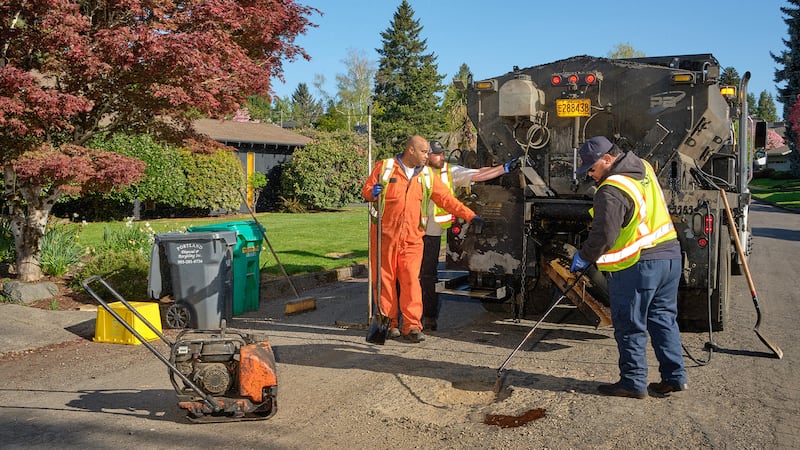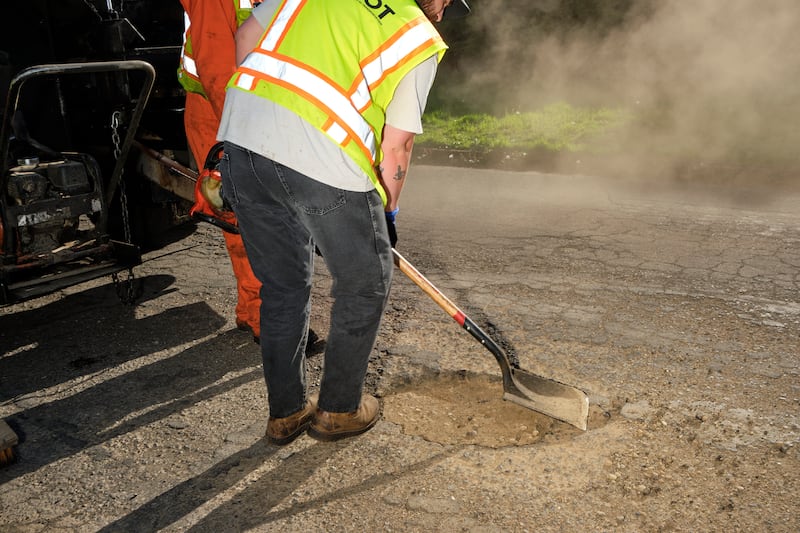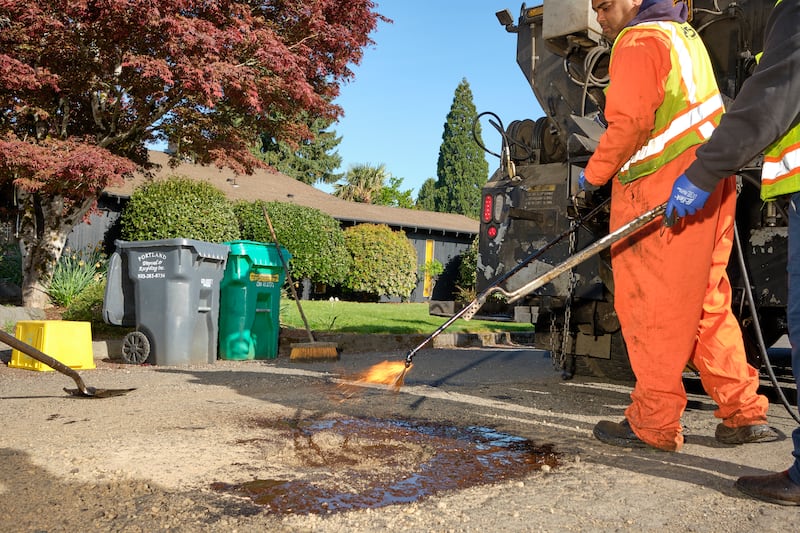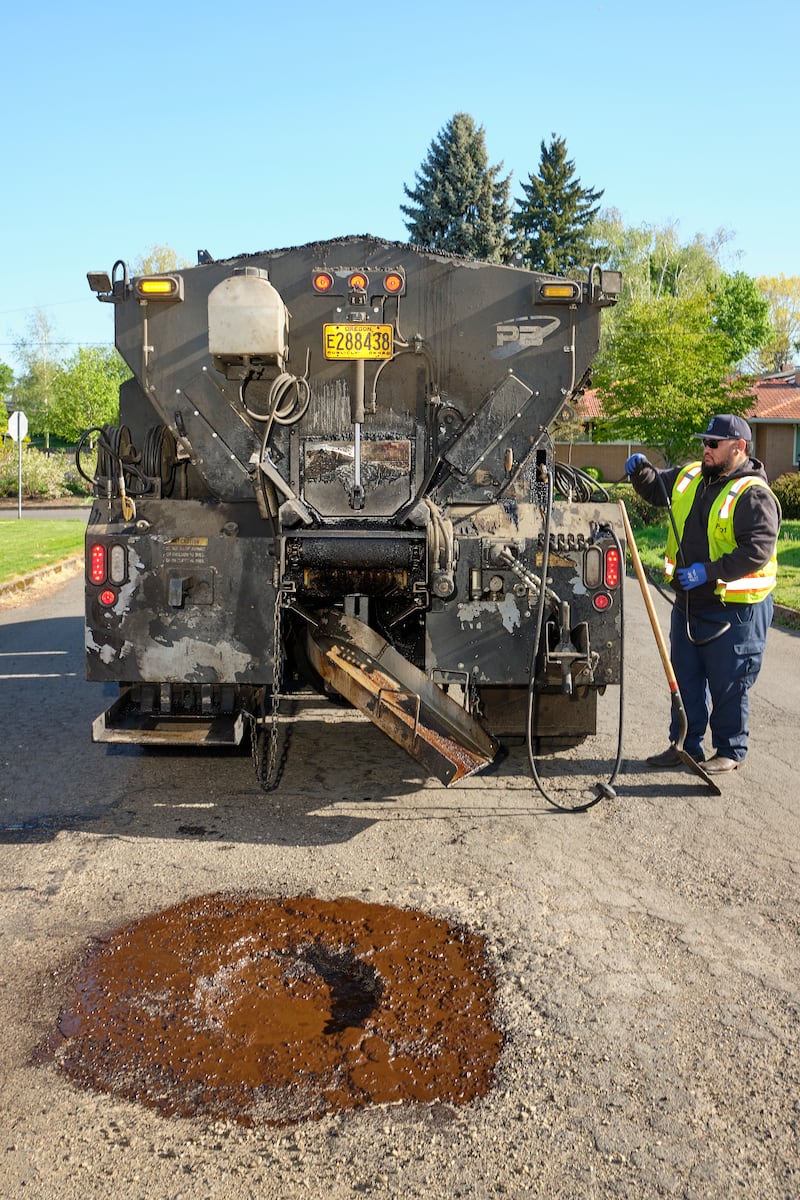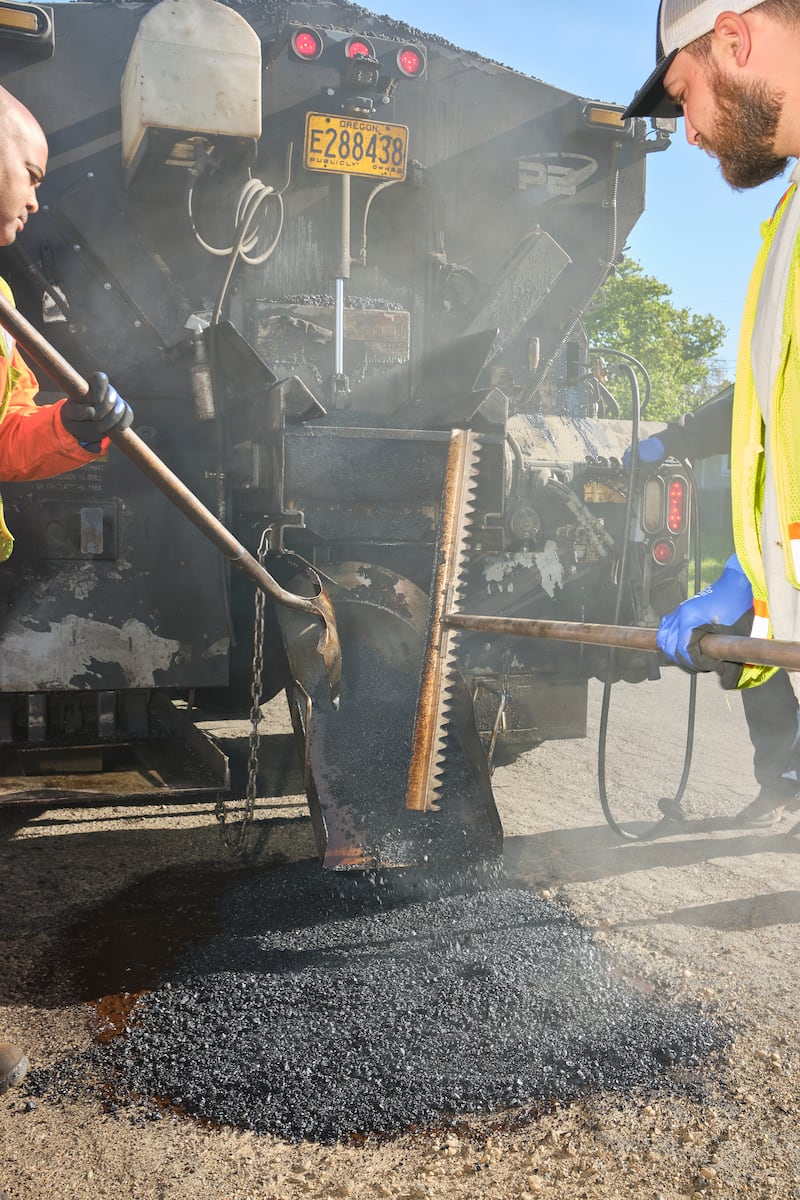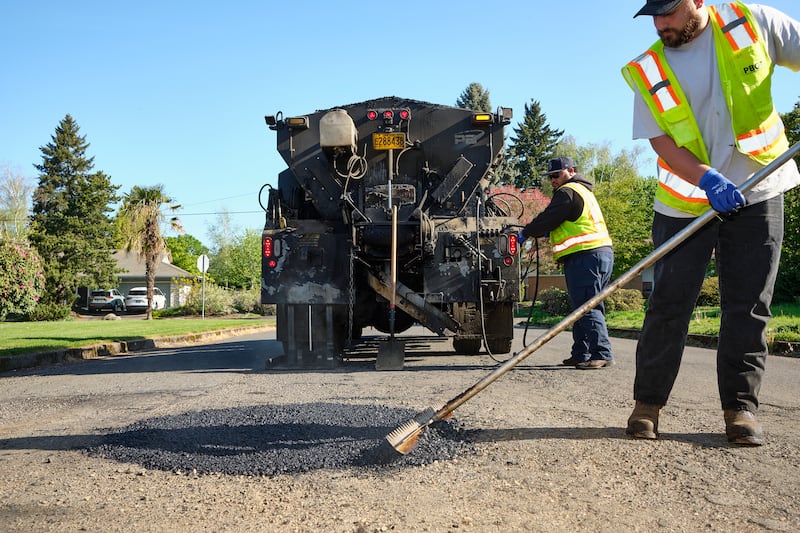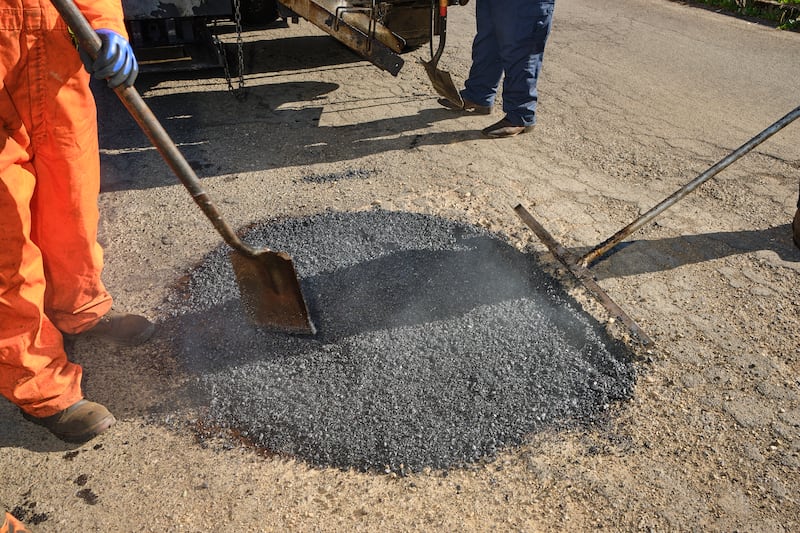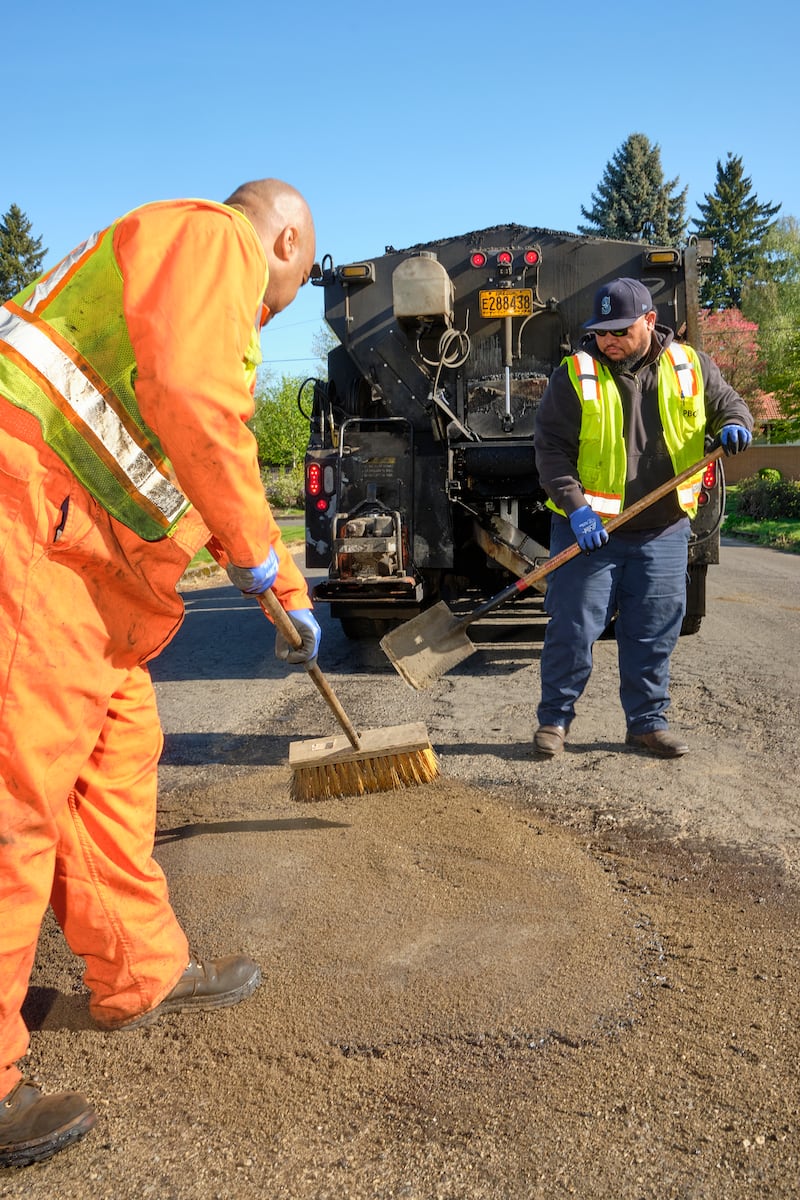Ask most Portlanders who the city’s last great mayor was, and they’re likely to say Vera Katz.
First elected in 1992, she served three terms, during which she revitalized downtown, built bike lanes, funded public art, and spent millions on schools.
But Katz, a New Yorker who didn’t drive in part because she couldn’t pass the driver’s test, ignored the roads, and the hundreds of potholes that riddle Portland’s streets are part of her legacy. They appear in great numbers now because Portland didn’t take care of its streets back then, former city officials say. Under Katz, the city trimmed $1.1 million for street maintenance in fiscal 2003 alone, according to a 2015 story in The Oregonian.
Next month, the Portland Bureau of Transportation will ask voters to renew a 10-cent tax on every gallon of gasoline pumped at a city service station, first approved in 2016. Voters narrowly passed it then and renewed it in 2020. Mingus Mapps, the commissioner in charge of PBOT, pleads for them to do it again in May so he’ll have another $70.5 million to stave off total ruin for another four years.
“Our roads are trashed,” Mapps tells WW. “If we do not renew this particular program, we’re going to be in a world of hurt.”
Of those revenues, Mapps pledges, about one-third, or $23.5 million, will be spent paving degraded streets. Another third will go toward traffic safety (upgraded crossings, sidewalks, lighting). The last third is earmarked for potholes ($5 million), base repair ($4 million), sidewalk and bike lane retrofits ($2.5 million), gravel street service ($4 million), and similar items.
The new money will be a drop in an almost bottomless bucket. The Transportation Bureau’s maintenance backlog stands at $4.4 billion, and it’s growing.

Portland voters, many of whom have reached their limit on seeing millions in tax money go unused in special pools like the Portland Clean Energy Fund and Preschool for All, may look at another four years driving down the same pockmarked streets and wonder: Just how angry should we be about this? And who should we blame?
Unfortunately, confronting the people responsible would require a time machine (maybe a DeLorean). Roads are like teeth, says Steve Novick, the city commissioner who had responsibility for the Portland Bureau of Transportation from 2013 to 2016. If they don’t get regular maintenance, they decay, requiring major (and expensive) repair, like root canals and implants, but for streets.
Steve Townsen, who served as city engineer for 18 years starting in 2005, agrees. “What you’re seeing now are the results of decisions made 20 or 30 years ago,” he says.
It would have been much cheaper to fix the streets during the last decade than it is now. Materials costs have risen 50% just since the pandemic, and the Portland Bureau of Transportation is running a $32.6 million deficit for the coming fiscal year, out of a total budget of $509 million, most of which is restricted and can’t be used for discretionary repairs.
“The transportation system is going to continue to deteriorate unless we get vast amounts of money,” Novick says. “We’ll have to talk about which streets are going to go back to gravel.”
Where we’re going, we won’t have roads.
In the months leading up to the election, WW thought it would be fun, or at least less depressing, to probe Portland’s pothole problem by asking readers to send in pictures of the nastiest ones they could find. Now, we’ve picked a winner (see “Portland’s Biggest Pothole,” here).
The exercise taught us a few things. First, Portlanders really care about potholes, and with good reason. Hitting a big one at speed can cost real money. Aaron Smithers, a manager at Les Schwab in Beaverton, says a customer came in last week with a cracked aluminum wheel on his fancy Land Rover that lists for $1,700.
Our asphalt abscesses knock wheels out of alignment, cause tire sidewalls to bulge, and treads to separate. On a bike, the damage can be much worse, to say the least.
Just ask Gillian Conroy, a resident of Clark County, Wash. Last week, she sued Portland and Oregon for $3.7 million over a pothole. Two years ago, the suit says, she was driving the speed limit on Southwest Capitol Highway near Alfred Street when she hit a pothole that lifted her car so “abruptly and forcefully” that she hit her head, causing a concussion, traumatic brain injury, tinnitus and a torn rotator cuff. She also suffers PTSD, anxiety and depression. Her complaint doesn’t say whether she was wearing a seat belt. Her attorney, Brian Chenoweth, didn’t return an email seeking comment.
Another lesson from our contest: Potholes are different from sinkholes. A few readers lectured us on that. Unlike most other substances in the known universe, water expands as it cools. That law of physics is bad for Portland, where a deep freeze can come after months of rain. Water soaks into the roads, then freezes and cracks the pavement. More water gets in, and the process repeats. The cracked pavement erodes under the weight of thousands of vehicles, and voilà: pothole.
Sinkholes are different. They start from the bottom. Rock or soil under the pavement collapses or is washed away by an underground water source, and the asphalt crumbles into the void.
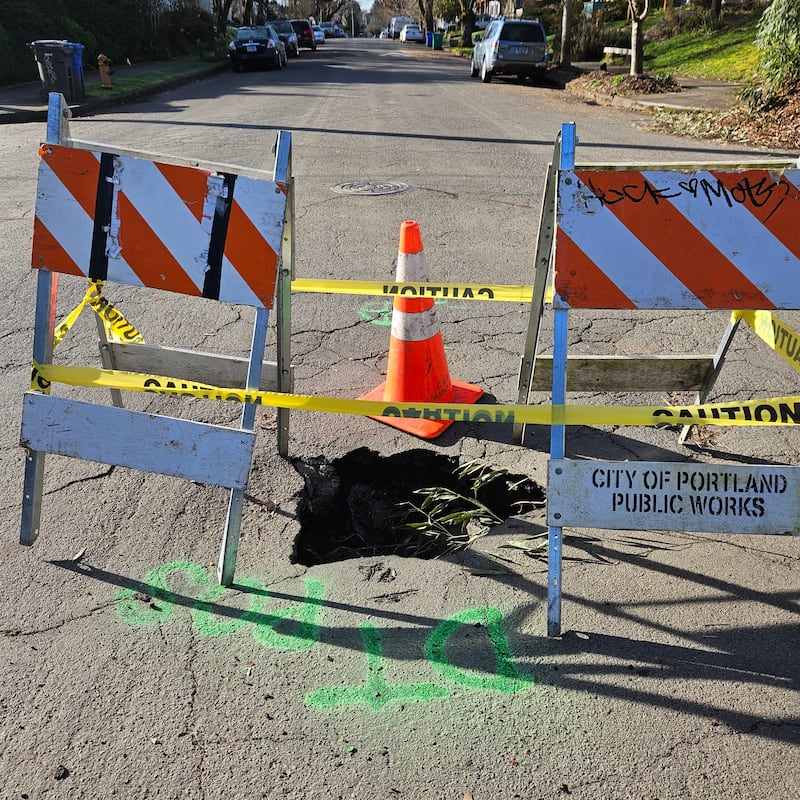
Things are really bad this year because January’s ice storm bludgeoned Portland’s pavement worse than the Oklahoma City Thunder did the Blazers (final score: 139-77) days before the storm arrived. Such cold snaps could become more frequent as global warming upsets the vortex that normally swirls around the North Pole, sending frigid air southward, some climate models show.
The climate chaos will doubtless prey on a unique weakness in Portland: More than 50 miles of unpaved streets (out of a total 1,993 miles of roadway) in places where, in most other major cities, they would be paved. Many of these roads look like they’ve been hit with mortar fire.
Most of Portland’s streets were built by private developers as they constructed neighborhoods. If you live in a neighborhood where the developer didn’t bother to pave, like much of Alberta and Cully, then it’s up to you (“Dirt Roads, Dead Ends,” WW, May 11, 2011). The city helps neighbors team up and form local improvement districts so the work can be financed, but homeowners still pay.
One bit of good news, if you can call it that: Portland isn’t alone. Plenty of cities have roads that are even worse. Teletrac Navman, a company that makes software for tracking truck fleets, said the title for overall crappiness goes to San Francisco/Oakland, followed by nearby San Jose, Los Angeles, Honolulu and Milwaukee. The Portland metro area comes in at 66th worst, and excluding the suburbs, the city would probably fare much worse.
Finishing 66th worst is nothing to brag about. But absent a sustainable funding mechanism, PBOT is left to triage streets as best it can. Like the best guerrilla fighters, its crews have gotten good. On a recent Tuesday at 8:40 am, a crew of four began filling a pothole on North Bryant Street off Interstate Avenue.
0 of 7
They cleared dust from the hole with a blower, primed it with liquid tar and heated it to the desired tackiness with a torch. The driver rolled the truck up and unloaded asphalt in the hole. The crew raked it smooth and tamped it down. Hole filled. Next, they widened their scope, tarring a long rectangle of cracks around the hole and heating that. They raked and tamped, then spread sand along the edges, where the hot tar pools, to keep it off drivers’ cars.
The result: a 20-foot-long patch of fresh asphalt where a hole and a network of cracks had been. Total time: 20 minutes, including time to answer questions from a wonk reporter. At top speed, the crew can fill 100 holes in a day. It’s challenging work. The asphalt comes out at 350 degrees Fahrenheit. It cakes on shoes, which can end up weighing 10 pounds each.
“The guys at PBOT work their tails off,” says Mike Kerr, former head of strategy and innovation at the bureau. “If we don’t renew this tax, things are just going to get worse.”
So how did we get here?
In 1988, an audit showed the city had a problem: a $38 million paving backlog because state and federal funds, and revenue from parking meters, were falling short, The Oregonian reported in 2015.
Other places faced the same dilemma. Washington County voters passed a property tax for roads in 1986. Medford started a street fee in 1991. Portland’s solution was to use utility license fees—cash raised from electric, gas and telecom companies that put gear next to public roads. But the City Council didn’t make the 28% share for roads mandatory. It was a target.
Congressman Earl Blumenauer was on the City Council in the 1990s and pushed Mayor Katz to spend more of the fees—which went into the general fund—on roads.
“The city, in its wisdom, used the utility fee for other purposes,” Blumenauer tells WW. “I thought that it was shortsighted.”
But Katz prevailed, Blumenauer says. “She wrote the budgets and got a couple of members of the council to go along. It wasn’t irrational. I just thought it wasn’t the best long-term interest for the city, and we’ve been playing catch-up ever since.”
By 2000, Portland had the ninth-worst roads in the nation, according to the 2015 story in The Oregonian. Yet the City Council, under Katz, boosted the street preservation budget by just $200,000 while increasing funds for schools by $4 million, The Oregonian said.
Mayors who came after Katz didn’t fix the problem. Sam Adams, for one, contributed $100 million to help Multnomah County replace the aged Sellwood Bridge. Novick says that money could have been raised from other sources, leaving more for streets. “If there is something you can take to the voters, it’s money for a bridge that’s going to fall down,” Novick says.
Adams says he polled Portlanders about their priorities and learned that the top one, citywide, was replacing the Sellwood Bridge, which is why he made it a priority. He tells WW a city gas tax was a nonstarter during the Great Recession.
“We would have lost at the polls if we put anything on the ballot,” he says.
Novick, who’s now running for a seat on the expanded City Council, hit a political speed bump by trying to turn on a new spigot of money for street paving and safety in 2014. He proposed a street fee charged to households and businesses, a funding method used by Medford, Hillsboro, West Linn and Lake Oswego. Voters hated the idea. He fell back—but not before putting his job on the line. If they didn’t like his plan, he said, they could vote him out of office. They did.
“A 10-cent gas tax is what I could get,” Novick says.
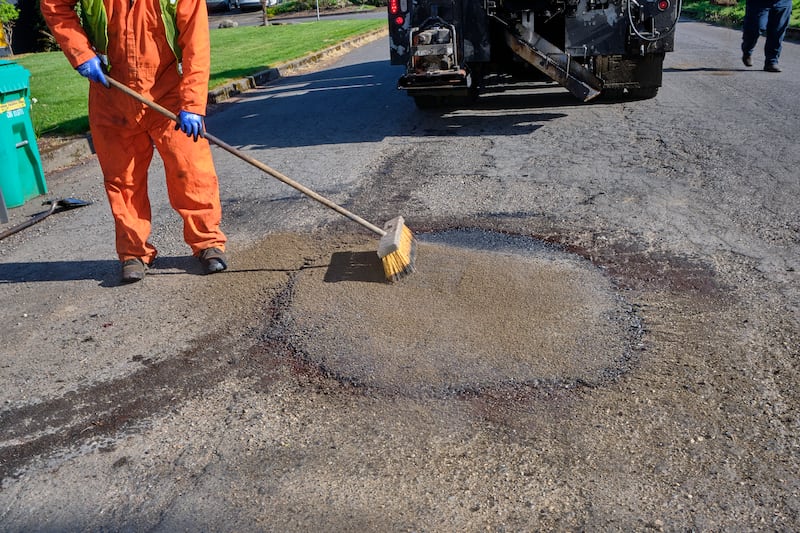
Four more years of gas tax is a temporary solution, and Mapps admits that. The reason PBOT is so short of funds now is that there just isn’t as much gas to tax. Electric cars and hybrids don’t use as much, so there is less revenue for road repair. In a more perfect world, Mapps would be pitching a tax that accounts for the rise of electric vehicles, which, after all, use the roads, too.
“The gas tax is obsolete,” Mapps says. “I doubt it will be the system we use to fund our transportation system even 10 years from now. But right now, I’m trying to make sure we survive the next four years.”
Mapps, who’s running for mayor, says he’s laser-focused on repairs. But he stuck with the 10-cent tax on this year’s ballot, instead of going higher, because Portlanders are fed up with new levies, he says. That means PBOT will get another box of Band-Aids and little more, says Noah Siegel, a former deputy director at the agency.
Everyone knows the right solution, Siegel says, but it’s a “huge” political lift: a vehicle miles traveled tax, or VMT. Drivers pay according to how far they drive. Unlike a gas tax, a VMT wouldn’t exempt electric cars and hyper-efficient hybrids, which still use the roads.
Among the problems, supportwise, is that cars would need trackers in them, something that runs counter to Americans notions of privacy, even though phones already track everything we do, Siegel says.
A VMT also would capture more revenue from the explosion of trucks roaming the streets delivering packages, Siegel says. Brick-and-mortar stores pay property taxes and other levies, while delivery trucks, many of which are going electric, pay only the gas tax—for now.
“There is an inherent exploitation of the public good,” Siegel says.
Novick agrees that a VMT is the way to go. He would augment the dollars by having progressive registration fees that rise with the value of the car, with surcharges for new gas guzzlers, especially SUVs. Old ones are bad, too, but hammering those would hit low-income motorists who own aging vehicles.
Mapps says better fixes require action by the Oregon Legislature. For its part, the state already charges higher vehicle registration fees for electric cars. In addition to base registration fees, which vary by model, electric cars pay another $115 a year, compared with $20 for vehicles that get anything below 19 miles per gallon, and $25 for those at 20 to 39 mpg. Get over 40, and you pay an extra $35 per year. (It may seem odd to penalize someone for going green, but high-mileage cars don’t float above the roads, and electrics tend to be heavier.)
Some of the higher fees flow to Portland, but it’s not enough to replace the 10-cent-per-gallon tax, Mapps says.
Renewing the gas tax may be a Band-Aid, but it unites leaders as diverse as City Commissioner Rene Gonzalez, whom critics call a Democrat in name only, and state Rep. Mark Gamba, a bona fide lefty. There are only two statements in opposition in the Voters’ Pamphlet, both from the perpetually grumpy Taxpayers Association of Oregon.
Like the gas tax, patching potholes is a temporary solution to a problem decades in the making, like building pod villages in lieu of affordable apartments, another Portland public policy hack. Money spent filling holes is money that can’t be used to grind battered pavement off the road bed completely and replace it, a longer-lasting solution.
Smooth pavement isn’t the only reason PBOT needs more cash. The agency plans to put more than a third of the new revenue toward safety, and with good reason. More people died in traffic crashes in 2023 than in any year in the past three decades, PBOT said in a report April 16. A total of 69 perished, eclipsing the old high of 64 in 2021.
Potholes, sadly, may be the least of our problems.
